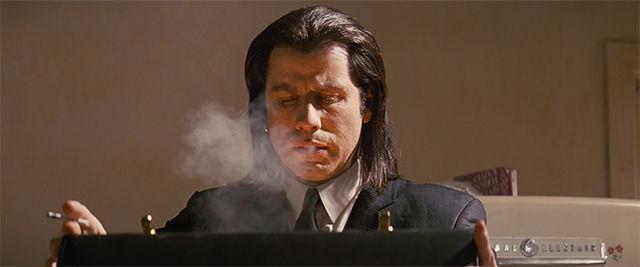Note: I spent the first day of fall break binge watching substance abuse movies with my boyfriend for this article. We left his house twice to get food; it was probably the most productive day I’ve had in college yet. These are the results of that day and a few subsequent, less intense days of research.
“Trainspotting” (1996), available on Netflix
Witty, gritty and somewhat horrifying, this British black comedy film is both ruthless and emotionally charged. Compelling cinematography chronicles a heroin addict’s misadventures with his “friends” and his attempted recovery. This is probably my favorite out of the movie binge; while it was spectacularly shot and remarkably funny, it was definitely a morbid look at the effects of drug abuse.
“Fear and Loathing in Las Vegas” (1998), or Artsy and Aimless in some Desert
Journalist Raoul Duke (Johnny Depp) is wildly unpredictable. He and his equally unstable attorney travel to Las Vegas to cover a motorcycle race with a load of drugs (“…two bags of grass, seventy-five pellets of mescaline, five sheets of high-powered blotter acid, a saltshaker half-full of cocaine and a whole galaxy of multi-colored uppers, downers, screamers, laughers… Also, a quart of tequila, a quart of rum, a case of beer, a pint of raw ether and two dozen amyls…”). Shenanigans ensue. The movie is filled with long colorful trips and entertaining, erratic behavior. It’s a good watch but (somewhat ironically) lacking in real substance or direction.
“[It’s] an outrageous farcical commentary on the meaning of life and human reasoning, presented in a drug and alcohol fueled rage,” said Virgil Wilson, a senior studying geology. Wilson relies on Raoul Duke’s classic Hawaiian shirt and aviator sunglasses combo for a solid go-to Halloween costume.
“Blow” (2001): A cocaine smuggler’s (Johnny Depp) journey from rags to riches to rags again (based on a true story)
Based on George Jung, Pablo Escobar, Carlos Lehder Rivas and the Medellín Cartel’s trafficking exploits, the movie starts out promisingly, but succumbs to coying sentimentality toward the end. Intense betrayals, reckless love and $100 million in drug money gives way to a weak ending that asks for undeserving sympathy.
“The movie changes your opinion on Jung so many times,” said Greg Trotta, a senior studying civil engineering. “You’re left questioning its authenticity.”
“Dazed and Confused” (1993), available on Netflix: a typical coming-of-age story set in the ‘70s, which plays on some classic high school tropes
The movie explores hazing, parties and weed through the eyes of new seniors and freshmen, with the aid of a banging soundtrack. While it did seem somewhat unrealistic, it definitely had a few touching moments (tainted with banality). Disclaimer: I did sleep through the last 30 minutes.
“Kid Cannabis” (2014), available on Netflix: an interesting look into the more modern demise of a young American kingpin (based on a true story)
Filled with sharp one-liners, “Kid Cannabis” documents Nate Norman’s inevitable evolution from a likable pizza delivering dropout who helps support his mother and little brother, to a self-obsessed head of a drug operation. He and his friends smuggle pot over the Canadian border, getting caught up in the flashy rewards and deadly disputes that go along with it. Spoiler: He’s busted and sent to prison for 12 years after his ring was accused of moving $38 million worth of bud.
“Pulp Fiction” (1994), available on Netflix: Tarantino black comedy
Often regarded as one of the best films of all time, “Pulp Fiction” is highly stylized, violent, clever, weird and iconic. It has a loaded cast (featuring the likes of Uma Thurman, John Travolta, Samuel L. Jackson and Bruce Willis), and powerful, ingenious dialogue. The iconic heroin-mistaken-for-cocaine overdose scene was enough for the film to make the list. Side note: Watch this movie. I’ve wanted a bad mother f—– wallet since I first saw the movie at 14.
“Scarface” (1983): “Say hello to my little friend…”
Scarface stars Al Pacino as the Cuban refugee, Tony Montana, who rises to a formidable drug lord in the 1980s. Three hours of profane dialogue and graphic violence led to an initial negative reception of the movie in the ‘80s. A more contemporary review — possibly with a desensitized perspective — finds the film less shocking, highly quotable and an iconic mob movie.
“Requiem for a Dream” (2000)
One of the better-known drug-related movies, “Requiem for a Dream” explores drugs’ harrowing effects on the delicate nature of human relationships. Clint Mansell’s epic score frames bizarre film scenes of a speed addict and three heroin addicts. There’s no happy ending for any of the characters; the final shots of the movie leave viewers with a bitter taste in their mouths.
Additional Must-Sees:
“City of God” (2002)
“Dope” (2015), available on Netflix
“Leaving Las Vegas” (1995)
“Drugstore Cowboy” (1989)
“Traffic” (2000)
“The Man with the Golden Arm” (1955)








